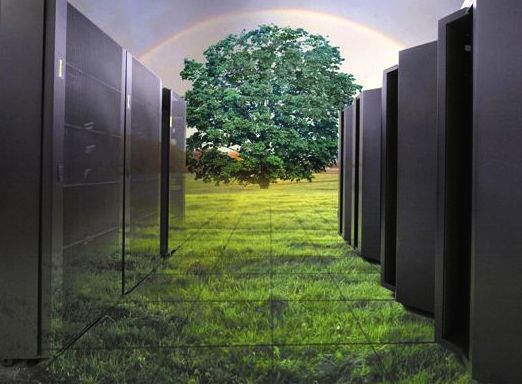Green Grid Updates Cooling Maps With New ASHRAE Classes

The Green Grid has updated its free data centre cooling maps to allow managers to take advantage of free air-cooling
The Green Grid has updated its free “cooling maps” to help data centre operators and owners take advantage of free cooling all year round for their facilities, thereby reducing energy costs.
The updated free cooling maps now take into account the latest guidelines from ASHRAE (the American Society of Heating, Refrigeration, and Air conditioning Engineers), regarding the “Recommended” and “Allowable” temperature and humidity of data centres and IT equipment.
Hotter Data Centres
Last February, ASHRAE said it was gearing towards even more aggressive economisation in data centres as it planned to widen the temperature and humidity ranges for servers in the new version of its guidelines.The Green Grid maps now include these updated guidelines.
 The Green Grid maps are meant to show graphically, what the potential for free cooling might be, under ideal conditions, at any location in Europe, North America and Japan. In doing so, the society hopes to encourage more use of free cooling by data centres, ultimately reducing their energy consumption.
The Green Grid maps are meant to show graphically, what the potential for free cooling might be, under ideal conditions, at any location in Europe, North America and Japan. In doing so, the society hopes to encourage more use of free cooling by data centres, ultimately reducing their energy consumption.
“The new [ASHRAE] specification created two new classifications of data centres and expanded the range of Allowable environmental conditions in order to encourage energy efficiency practices like air-side economisation,” said the Green Grid’s report on the map update.
Essentially, the ASHRAE guidelines now allow for wider allowable ranges in which data centre managers can run their facilities and servers.
“If data centre operators are willing and able to run in the Allowable ranges for temperature and humidity, including the newly defined class A3 and A4 ranges, there are a significant number of additional hours available to use outside air for cooling IT equipment,” said the Green Grid. “The ‘and able’ part of the statement above is determined by manufacturers’ specifications of the equipment in the data centre and company policy.”
“The new A3 Allowable range in the 2011 ASHRAE specification states that inlet temperatures up to 40°C are acceptable,” added the organisation. “The new A4 Allowable range says that IT inlet temperatures can range as high as 45°C.”
No mechanical cooling
The Green Grid’s A3 maps, where the highest dry bulb temperature of 40°C is allowed, means that, in reality, 99 percent of Europe can use free air cooling all year.
Similarly, 97 percent of North America and 91 percent of Japan, including Tokyo, can use free air-cooling all year if operators can specify conditions up to the A3 Allowable ranges, according to the Green Grid.
“The maps show the potential for free air cooling if the expanded environmental Allowable ranges are used to govern temperatures and humidity in the data centre,” said the Green Grid. “Virtually all of North America and Europe, and more than 90 percent of Japan, can operate without mechanical cooling if data centre owners can allow occasional incursions into the higher end of the ASHRAE class A2 and A3 ranges.”
“The new Allowable ranges have great potential for savings of energy, carbon, water and capital expense,” it said. “Data centres that take advantage of expanded environmental ranges can be designed without chillers or cooling towers, resulting in lower capital and operating cost, and can be run with higher reliability because there will be fewer components in the design to fail.”
The new cooling maps come as data centre managers are increasingly raising the temperature threshold inside their facilities, as this can save hundreds of thousands of pounds in costs. To do this, they have turned to simpler and more cost-centric cooling systems, including “free air” cooling.